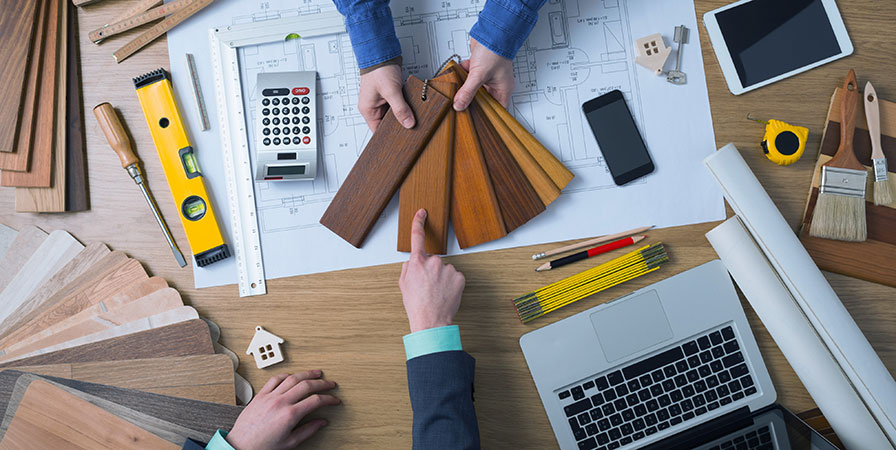
If you’re like most people, you’ve probably imagined what it would be like to build your dream home from scratch with each and every room, detail and finish perfectly tailored to fit your needs. It sounds incredible, right? But before you get your tools out and break ground, it’s important to figure out that burning question - how the heck are you going to finance it?
If you have all the money on-hand, great! But for most, it entails a Construction Mortgage, which, as the name implies, is a mortgage designed to help people cover the cost of building new homes, as well as construction projects or renovations over $40,000. The best way to determine affordability is either to simply apply for a Construction Mortgage or speak with a Mortgage Expert in your community.
When you apply, there are typically two types of Construction Mortgages: Contractor-Built Home Mortgages and Self-Built Home Mortgages. Of these two choices, the first option is usually the most common and easier to get approved because it involves an experienced, professional contractor managing both the build and many requirements of the construction mortgage. If you’re planning to act as the general contractor yourself, it’s a little more challenging and usually involves proving that you have the expertise to manage and administer a project of this complexity.
When you get into the nitty-gritty of the application process itself, you’ll find that it’s somewhat more complex than your regular, run-of-the mill residential mortgage. Eligibility requirements differ between lenders, but you’ll likely need to pull together a fair amount of documentation, including: your T4 or Notice of Assessment, a list of your assets and liabilities, your property deed, building plans, building contracts, all cost estimates, a survey and water and septic certificates.
Next, it’s important to understand that Construction Mortgages don’t work the same way as traditional mortgages, at least at first. Essentially, you’ll apply for the overall amount you need to complete your entire build, minus the money you can contribute yourself. However, this overall amount is not lent to you upfront. Instead, you’re given access to the funds at predefined stages as certain construction milestones are completed, pending appraisals and examinations of the property. Usually, once the full amount is dispensed to you, the amount owing will be converted into a traditional mortgage and you can choose your term, options and select an available rate.
These pre-defined stages vary from project-to-project and will be worked out between you and your lender. But, for illustrative purposes, you might get your first draw of 15% of your overall mortgage amount when you complete the excavation and foundation. Your second draw of 25% might become available once you’ve finished the framing of your house, including the roof. Then, the third draw of 25% might be contingent on finishing the plumbing, wiring and wall cladding. The fourth draw of 20% might come after your finish the kitchen and bathroom. And your final draw of 15% might be available once the home is fully built and ready for occupancy. Because of this staggered structure, Construction Mortgages are also sometimes referred to as Progress Draw Mortgages.
You should get well acquainted with your draw schedule to ensure that funds are available as they’re needed to pay your trades people promptly. For example, you might not want to start work on the bathroom in stage three if you won’t have access to the funds to pay for it until the completion of stage four. It’s also a good idea to put a lot of thought into the draw schedule even before you talk with your lender to make sure it’s structured in a way that’ll work well for both of you.
After your financing is approved and you start work, you should also keep a tight ship when it comes to tracking your budget. That means listing out all your estimated costs, comparing them to actual costs and identifying any differences or discrepancies. You’ll also want to keep all your receipts for materials and contractor invoices to report your expenditures to your lender.
Hopefully, this financial walkthrough brings you a few steps closer to realize your dream of building a new home just the way you like it! For a full explanation of prerequisites and requirements, your best bet is to speak with a local Mortgage Expert who can advise you every step of the way.

